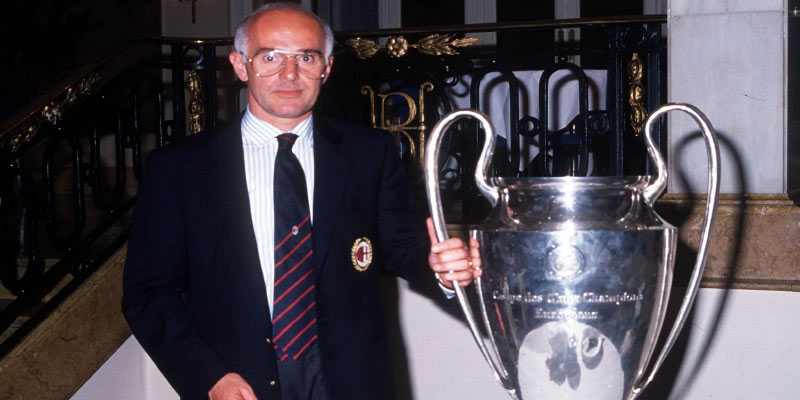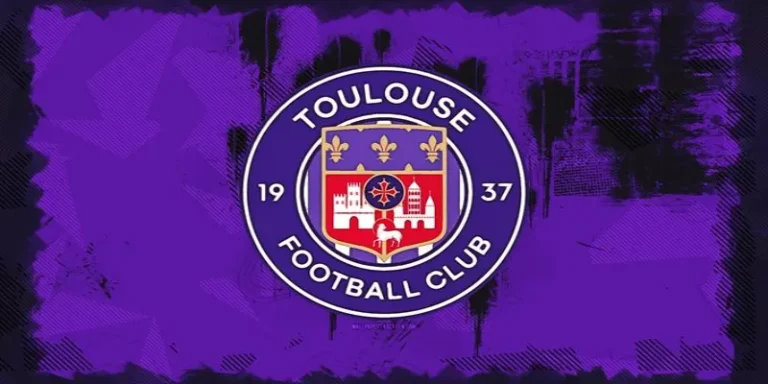
How Arrigo Sacchi Reinvented Football’s DNA Forever
Arrigo Sacchi didn’t just coach football—he rewired it. With no professional playing background, he dared to question convention and birthed a tactical evolution that still shapes the sport today. His AC Milan side of the late ’80s didn’t defend deep or rely on stars—they pressed high, moved as one, and thought as a team. Sacchi’s philosophy championed collective over individual, structure over spontaneity. He shattered the myth that talent alone wins games, proving that ideas, discipline, and vision could dominate Europe. His legacy isn’t just silverware—it’s a blueprint that echoes in dugouts worldwide.
Arrigo Sacchi’s Acclaimed Managerial Career
Arrigo Sacchi‘s managerial career is decorated with significant accolades, including his stints with the Italian national team and AC Milan, where he truly made his mark.
Coaching Career Beginnings
Sacchi began his career in management in the lower divisions of Italian football, with his initial foray arising at the club, Baracca Lugo.
Although his early days were met with modest success, it was here that Sacchi displayed his meticulous approach toward tactics and team organization, laying the groundwork for the game-changing methods that would follow.
The culmination of his journey from grassroots to elite coaching coincided with his appointment as the manager of Parma, where he earned recognition for his tactical acumen and transformational methodology.
Dominance at AC Milan
The zenith of Sacchi’s coaching achievements came during his time at AC Milan, wherein he orchestrated an era of dominance within both domestic and European football.
From 1987 to 1991, Sacchi led the team to incredible feats, including two consecutive European Cups and an Italian Serie A title during the 1987-1988 season.
His leadership transformed a talented group of players into a cohesive unit, establishing a legacy characterized by creativity, cohesive structure, and attacking dynamism.
Stint with the Italian National Team
Sacchi expanded his managerial prowess to the international stage when he took over the Italian national team.
His tenure included the 1994 FIFA World Cup, where Italy reached the final but fell to Brazil in a dramatic penalty shootout.
Despite criticisms surrounding the team’s performance in the tournament, Sacchi’s influence on Italian football became undeniable, as he urged players to embody a more complete understanding of the game rather than relying solely on rigid defensive strategies.
This chapter of his career further solidified his status within football, showcasing his aptitude to adapt his principles to different competitions, contextually reshaping how the national team operated.
Key Strategies Employed by Arrigo Sacchi
In his storied career, Arrigo Sacchi employed various strategic principles that defined his teams’ styles of play.
These strategies were a culmination of his profound understanding of football, showcasing his tactical insight.
Cohesion and Understanding
Central to Sacchi’s strategies was the notion of team cohesion and players’ understanding of each other’s roles.
Players were drilled not just in their individual responsibilities but in what their teammates needed at various stages of a match. This collective understanding created an environment where players intuitively moved in sync, with a strong emphasis on coordination.
Smaller-sided games were a fundamental component of his training sessions, fostering both tactical awareness and technical proficiency among players. Sacchi believed that the best teams displayed an innate sense of harmony on the pitch, enabling fluid movement and interplay.
Fluidity in Formation
Sacchi’s teams were characterized by a remarkable fluidity in formation that often saw players interchange positions dynamically.
This adaptability heightened teamwork, allowing players to exploit disorganization within opposing defenses.
Players had to be versatile, which Sacchi emphasized through rigorous training, teaching them to occupy various roles based on initial setups.
His signature 4-4-2 formation facilitated this fluidity; wingers would often drop back to support defensively and then surge forward to join attacks. This adaptability was a hallmark of his successful AC Milan side, contributing heavily to their attacking prowess.
Pressing and Recovering the Ball
A critical strategy employed by Sacchi revolved around high pressing to regain possession of the ball.
Rather than adopting a sedentary approach upon losing the ball, his teams would rush to recover possession immediately.
This relentless pressing style not only disrupted opponents’ build-up play but also fostered an aggressive mentality among his players, forging a sense of urgency and determination to dominate matches.
Through rigorous positional training and drills, Sacchi worked to instill this philosophy into each player, ensuring everyone was invested in the team’s overall approach.



